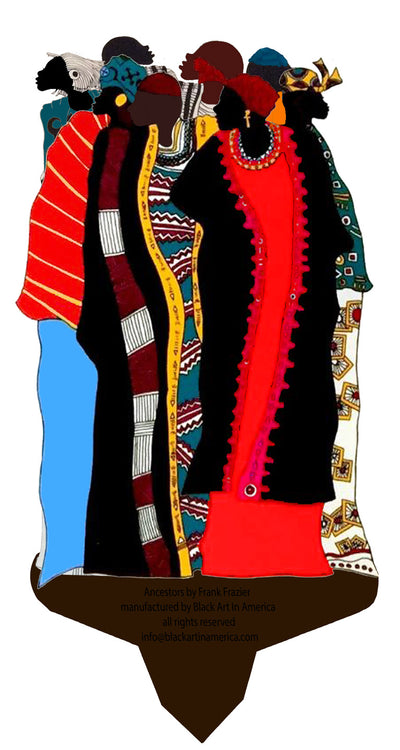Criner, Charles, (Gone Fishing)
Criner, Charles, (Gone Fishing)
"Gone Fishing" by Charles Criner
18 x 15 inches, acrylic painting on paper (2000) --framed (29 x 31 inches)

Charles Criner's past began in the small East Texas town of Athens in 1945, born one of nine children in his family. As a child, his artistic prowess was honed by copying images from Walter Foster Art books, a line of popular "How-To" books that teach drawing. Stemming from this experience as a young child, he then moved on to larger ventures such as producing artwork for his school and church. Criner then took advantage of greater opportunities, including the production of artwork for one of the local canning company's delivery trucks. Only in tenth grade at the time, Criner recalls that "It was a blessing to get paid to produce art and not have to work in the fields picking peas." His family quickly came to recognize his talent and encouraged him to study art, and ultimately Criner was accepted in 1964 to the Fine Arts program at Texas Southern University.Houston-based artist Charles Criner creates biographical images that are reflections of his childhood memories and cultural heritage. "My art reflects my beliefs and the things that I like to do," Criner explained. "Fishing has always been one of my favorite pastimes. Before I came to Houston in 1964, I fished with my brothers and sisters in the streams of East Texas. My fishing scenes reflect this. I also love to recapture the Black experience in the form of people working in the fields. I believe that these images are important and that they should be cherished windows into our past."
The creation of intimate personal narratives in Criner's artwork began during his years as a student at Texas Southern University, from which he graduated in 1968. His drawing teacher, the noted painter and printer Dr. John Biggers, was influential in communicating the importance of family and the rawness of life to Criner. Criner explained, "Doc began the class by asking us to write a paper about our lives and family. I wrote that I lived with my mother, grandmother, and eight brothers and sisters and that I began to draw when I was a small child. Doc rejected my paper. I then sought advice from upperclassmen. They explained that Biggers always stressed the importance of family. I rewrote the paper and said that before I came to the University, I had never been very far from home, I had never seen my father, had never slept in a bed without other people. I had never drawn a black person. Being forced to write this truth about my life brought me to a new level of understanding about my art. Biggers was teaching me that to create art, one must be in tune to the rawness of life and the immediacy of family. One must appreciate how profound are the generations, the pains and joys, the dirt.
Dr. Biggers also introduced Criner to the art of lithography, his chosen medium of working. Lithography is a method of printing that enables an artist to make multiples of an original drawing. The process begins by creating a wax drawing on a large stone, applying ink, and then pressing it onto paper. Usually this is done with a large press. Criner pulls his own lithographs using a 150-year-old antique press that was donated to him by the University of Houston. The end result can be either a black and white or color print, which is better known as a lithograph. Criner usually makes an example of each for every drawing. However, if a print doesn't turn out exactly perfect, he will often paint acrylic over the entire work to create an original painting on paper.
Dr. Biggers also During his years as a student, Criner supported himself by working as a sign painter, a graphic artist, a billboard illustrator and an art teacher. His true career, however, began in 1970 when he was hired as a staff artist at the Houston Post. In 1995 the Houston Chronicle acquired the 'Post', and he continued to work there until 1999.
Currently, Criner is the Resident Artist at the Museum of Printing History in Houston. There he operates a studio and leads stone lithography workshops using his antique press. His work is included in several private collections and has been exhibited at the University of Arkansas, the Okane Gallery at the University of Houston, the Museum of Fine Arts, Longview, the King Center-Columbus, Ohio, Southern University at Shreveport, Southern University at Baton Rouge, Texas Southern University, and the Tyler Museum of Art.
- Secure payments
- Low stock - 1 item left
- Inventory on the way








































